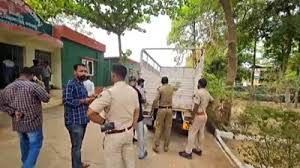India is on the brink of a groundbreaking transportation revolution, with Indian Railways approving a hyperloop test project spanning 40 kilometres. This current concept-to-test initiative places India among the frontrunners in next-generation transit systems, aiming to drastically cut travel times and enhance connectivity across the country.
The Hyperloop, a high-speed mass transit system, involves passenger pods moving through near-vacuum tubes at speeds exceeding 1,100 km/h.
The Integral Coach Factory (ICF) in Chennai is spearheading the development of these hyperloop pods in collaboration with IIT Madras and its startup incubatee, TuTr Hyperloop.
With an existing 410-metre-long hyperloop test tube at IIT Madras, the country is laying a solid foundation for the future of high-speed travel. The upcoming 40–50 km test track will be the longest of its kind, assessing the feasibility of commercial hyperloop operations.
Transforming Travel in Odisha: Hyperloop’s Impact on Connectivity
If implemented successfully, hyperloop technology could drastically alter travel in Odisha, slashing travel times to a fraction of their current durations.
The Bhubaneswar-Cuttack route, which typically takes around 30 minutes by car, could be traversed in just 2 minutes. Similarly, the journey from Bhubaneswar to Rourkela, currently taking approximately 6 hours by train, could be completed in just 18 minutes.
Hyperloop vs. Traditional Travel: A Game-Changer for India
The Hyperloop’s potential is not limited to Odisha; it could revolutionize travel across India. Currently, traveling from Bhubaneswar to Kolkata by train takes about six hours, but with Hyperloop, this journey could be reduced to just 30 minutes. A flight from Bhubaneswar to Delhi takes around two hours, whereas the Hyperloop could accomplish the same distance in just one hour.
Comparing major Indian cities, the difference is even more dramatic. The drive from Mumbai to Pune, which takes approximately three hours, could be reduced to just 25 minutes with Hyperloop. Similarly, a train journey from Bengaluru to Chennai, nearly seven hours, could be completed in a mere 20 minutes. Even the heavily traveled route between Delhi and Mumbai, which currently takes about two hours by flight, could be covered in 55 minutes using hyperloop technology.
Within Odisha, regional connectivity would also see significant transformation. Currently, it takes more than four hours to travel from Bhubaneswar to Berhampur by road, whereas the Hyperloop could cut this time down to less than 15 minutes. Similarly, reaching Sambalpur from Bhubaneswar, which today requires at least five hours by train, could become a quick 20-minute journey.
This reduction in travel time would have far-reaching implications. Commuters would save hours of daily travel, businesses would benefit from improved logistics, and economic activities could receive a significant boost. Enhanced mobility within Odisha could spur regional development, ensuring that cities like Berhampur, Sambalpur, and Balasore remain well-connected hubs for trade and commerce.
Challenges and Road Ahead
Despite its immense potential, hyperloop technology faces several challenges. The infrastructure costs for developing vacuum tube corridors are significant, requiring billions of dollars in investment.
Regulatory approvals, land acquisition, and environmental concerns also pose hurdles to large-scale deployment. However, India’s commitment to innovation is evident through the ongoing projects at IIT Madras and the planned 40–50 km test track.

.jpg)
.jpg)
.jpg)
.jpg)
.jpg)

.jpg)